Spectralink KIRK KWS400. Budget, professional DECT solution
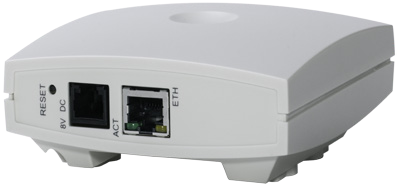
Novelty in adult DECT! And in my opinion - this is really what we lacked.
What do I mean by adult? GAP, SIP, roaming, handover ...
')
If you do not want to get tied up with vendor lock-in equipment, then today, in my opinion, you should pay attention only to two manufacturers: AAstra and Spectralink (Polycom) KIRK.
Of course, if you need 5 handsets, and one base station with a radius of 75-150m (depending on the room) is enough, you will consider the low-end SOHO hardware: Grandstream DP715, Siemens C610, Yealink W52 and close the project. If this can be called a project, of course, the deployment of wireless corporate communications.
And what if you have warehouses, a large office, several floors? You will simply need dozens of users, several base stations and handover, which I mentioned at the beginning.
And yes, I know that the market has a fresh hand-made article from the Chinese in the form of RTX, 200 users, up to 40 base stations, but it’s so ugly to tie to the handset at the price of more than $ 200 (7000 rubles), and others with it does not work.
A Russian man wants to eat fish and ... well, at the same time save.
In the Spectralink line (Polycom) previously there was only one successful solution. This KIRK server 6000 review which is already on the habr. The KIRK 300 was also quite good, but the price of $ 500 in the segment of budget DECT systems could not help it to reach similar sales positions.
Spectralink KIRK 2500 and KIRK 8000 cost a lot of money, and differ from the KIRK 6000 only in the ability to connect analog lines ...
Why are these systems needed at all? Especially in light of the fact that the updated KWS 6500 appeared on the market, which can be not only a SIP / DECT transfer, but also an unpretentious PBX.
KIRK 400 will be a hit, and you can read its review under the cat.
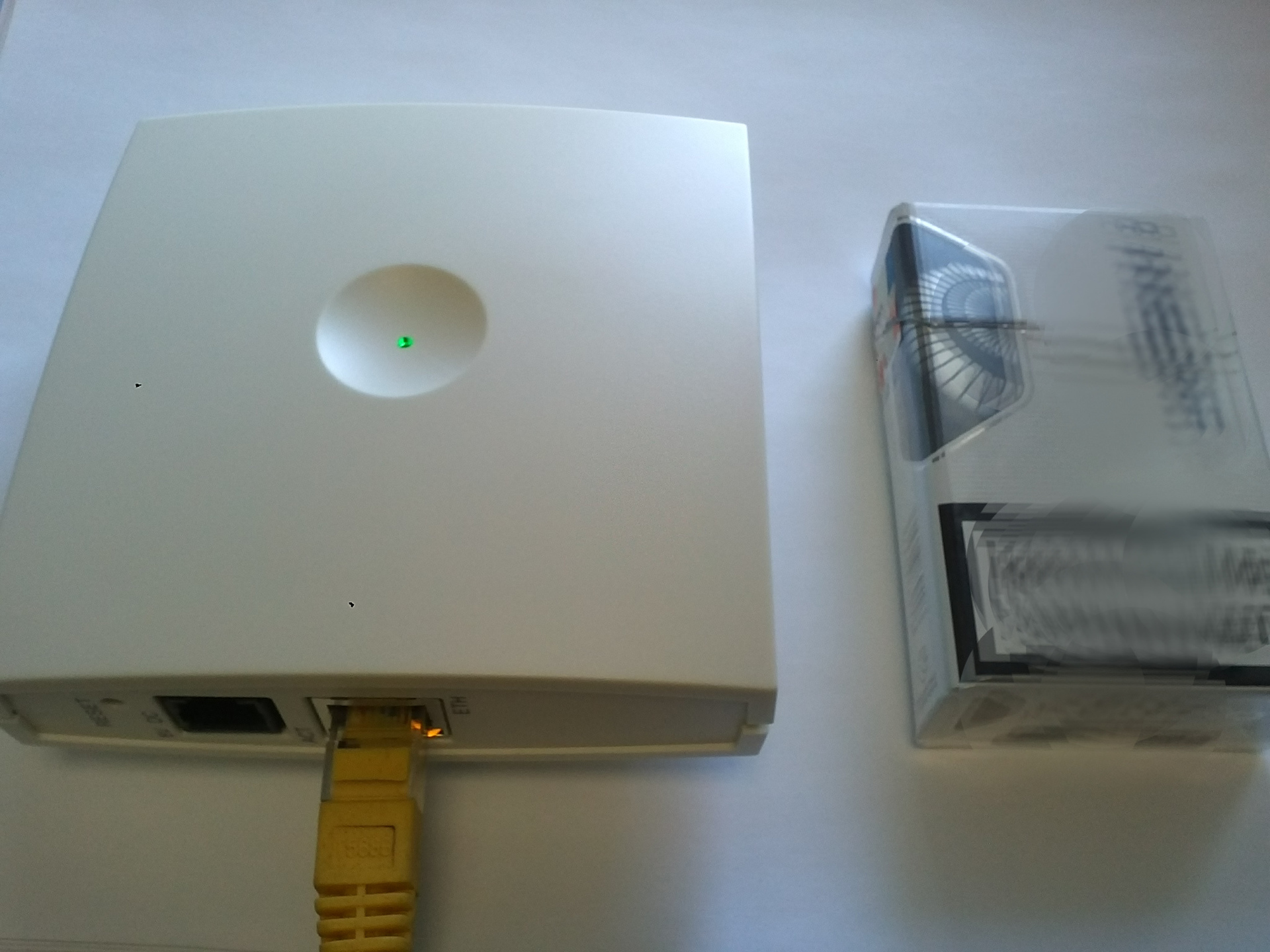
The system controller is integrated with the base station, as if like its predecessor - KWS 300 (the latter, by the way, has already been discontinued).
In the simplest version, without additional licenses, the KWS 400 system supports up to 12 DECT handsets and 6 simultaneous conversations. There are two possible installation options:
- Single cell : up to three repeaters, with the ability to build a chain.
- Multi cell : up to 6 radio points: up to three base stations and up to three repeaters. Additional required. license with a recommended value of $ 335
This wireless DECT server is the easiest to install. The system is managed via a web interface (HTTP / HTTPs). Supports importing contacts through LDAP, auto-conforming “native” handsets.

By the way, when entering the device, we see the “IP6000” greeting, and the login password is familiar to us: admin / ip6000. Interesting…
The KIRK 400 system can be supplied with a new external KIRK antenna. The latter has the same design as the base station, but is much cheaper. An ideal choice if you want to increase the coverage area in long corridors or remote points.
Specifications
- Power over Ethernet (IEEE 802.3af)
- External power support
- 12 voice channels
- DECT / GAP
- Standard DECT radius of coverage: 50-70 m indoors, and up to 300 m in open space.
- Support VLAN, NTP, DHCP / static, IPv6
- 10 x 10 x 4 cm, 120 g.
The following codecs are supported:
- G.711 A-law and μ-law
- G.726 (32kbps - 4 bit ADPCM)
- G.729 (paid, license cost $ 189)
Considering the functionality of the device, it is worth noting the necessary things that are not inherent in budget DECT systems:
For example, packet capture:
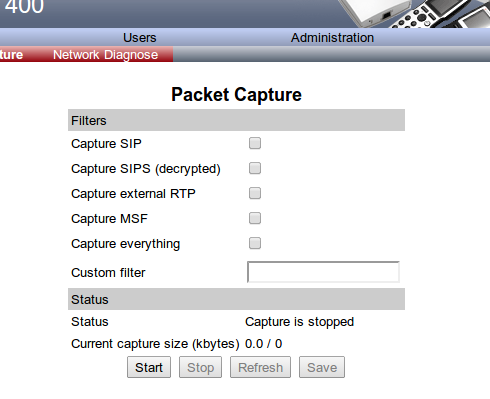
Detailed log, with the ability to upload to a remote syslog

Traffic statistics:
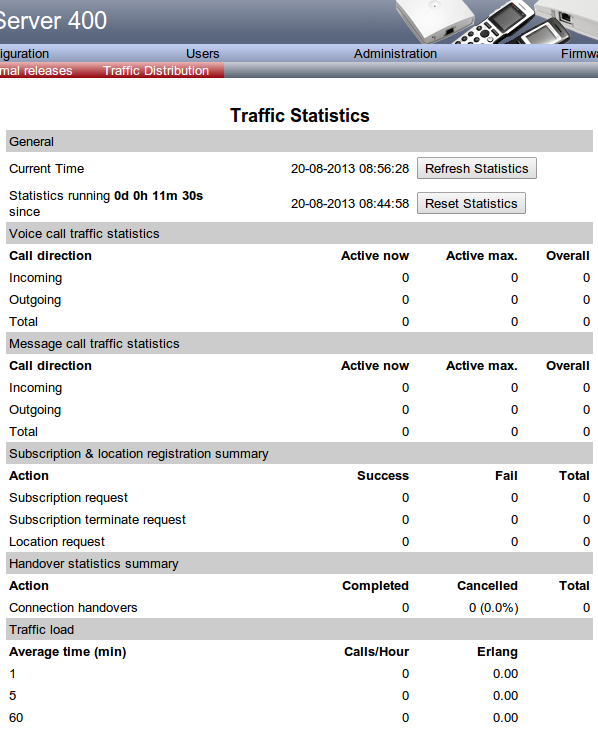
Installation example
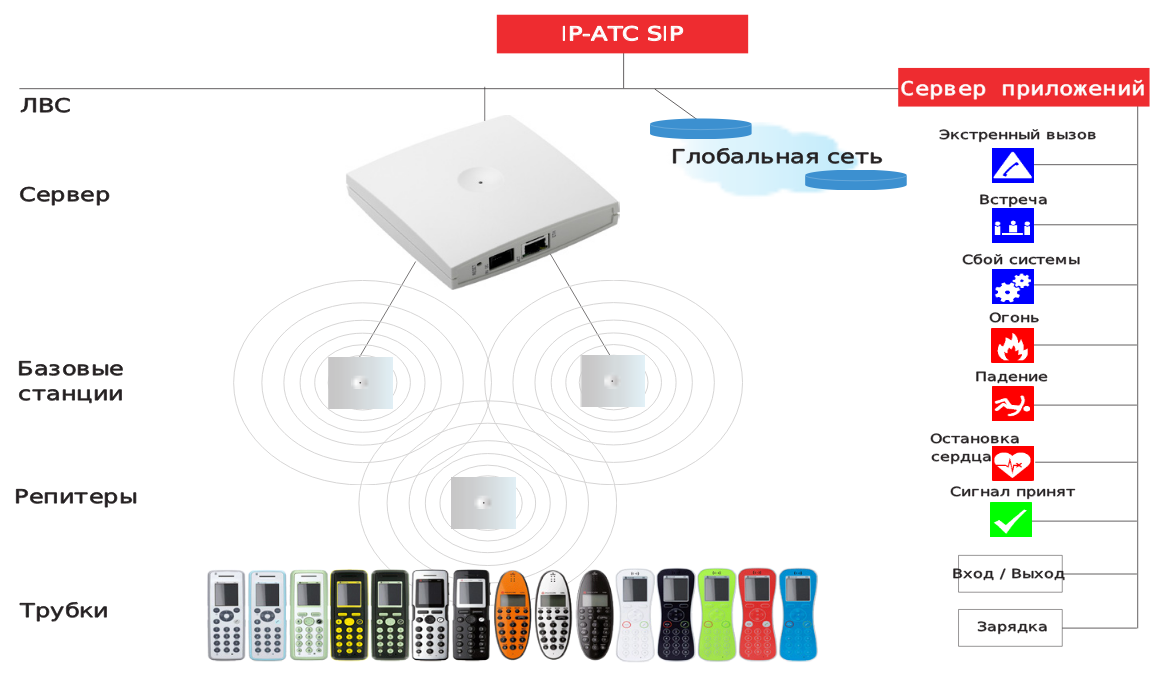
I did not conduct testing with my family tubes, everything is clear there: they work out of the box. True price biting, from 5,000 rubles for KIRK Butterfly. Where it is more interesting to consider competitors.
With the Panasonic KX-TPA50, Siemens C610H, and even the mega-budget Siemens A220, there were no problems. Partially refused to work Grandstream DP710, he does not have a melody when a call arrives, and also no CPV.
UPD: Panasonic probably changed something in the TPA50 handsets, and roaming is no longer working for them. Tried all versions of firmware KIRK 400 - to no avail.
So, what do we have for $ 436 MSRP ? A great, modular DECT server with a base station that can be expanded to 30 users and 12 simultaneous conversations. Integration with MS Lync + multsell. This is definitely a step forward compared to the previous KIRK 300.
Source: https://habr.com/ru/post/185586/
All Articles